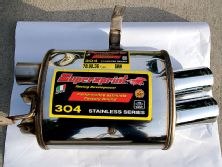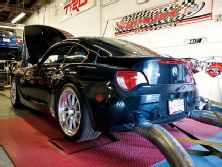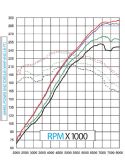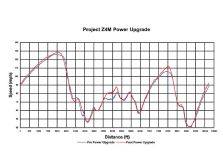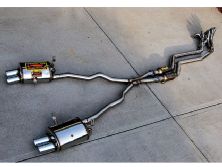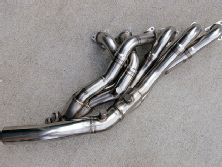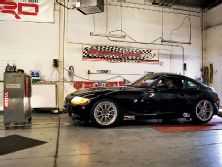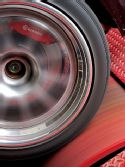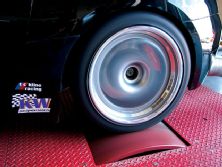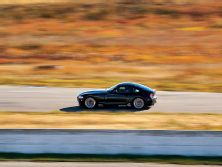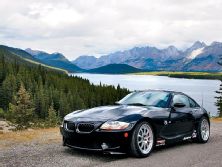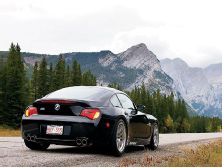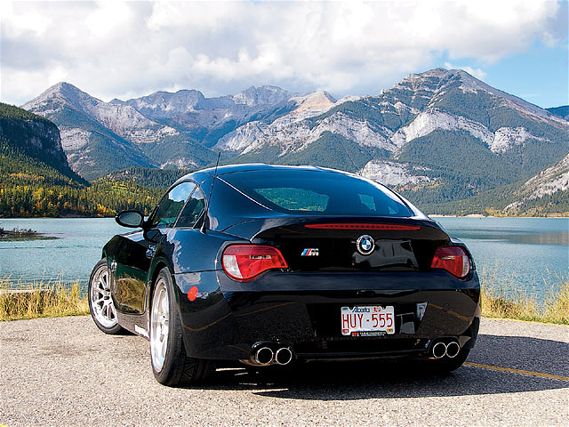 | BMW Z4M - Project Car
| BMW Z4M - Project Car
At just under 3,300 pounds and with an honest 330 hp under the hood, the Z4 M Coupe is already a fast machine. In parts two through four, we improved handling and braking, but now it's time to add more power to this highly competent chassis. In keeping with the original premise, I endeavored to do this without voiding the factory warranty and to back up power improvement claims with further track testing and thorough dyno work.
Considering the M Coupe was launched in 2006, the selection of aftermarket engine performance pieces is limited. Such are the problems of a low-volume car. While working on this part of the project, no software was available, two intakes were known to be in development, there were a couple of exhaust systems just released, the power pulleys from the E46 M3 would likely fit, and a lightweight flywheel-and-clutch combination was on the market. The pulleys and flywheel/clutch combo were ruled out due to potential warranty issues with bolt-on aftermarket parts that rotate with the engine.
So the choice was: which exhaust? Past experience with cat-back systems has shown little or no gain; in some cases, even a loss of power on the dyno. Fortunately, I'd seen excellent gains on an E46 M3 using a full Supersprint exhaust and the company had just released a similar system for the Z4 M Coupe and M Roadster. A discussion with the local BMW dealer regarding the complete replacement of an exhaust system revealed that my new-car warranty would remain intact-excluding, of course, the new exhaust. The full system was therefore ordered, selecting the Powerloop street muffler option to keep sound levels legal.
To fully document the upgrade, I performed some baseline runs. RCTS Canada R&D Inc., in Calgary (a local tuner and Dinan dealer), volunteered its 248C Dynojet for testing. All runs shown here were done with the same climate-controlled dyno, same operator, gear (fourth), fuel (91-octane), new dyno-dedicated air filter (except for the last run described), rear brake setup (Brembo 13.6-inch two-piece rotors) and the same air pressure in the rear tires (36 psi).
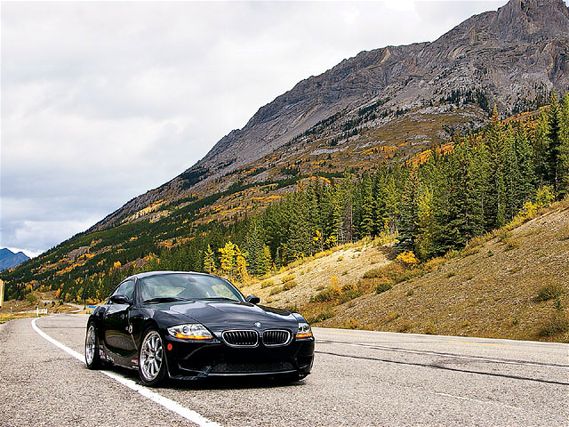 | BMW Z4M - Project Car
| BMW Z4M - Project Car
As a precursor to the official baseline that will be used for later comparisons, I ran the M Coupe with its stock rear wheels. The OEM rear wheel/tire combination (9x18 double five-spokes and 255/40 tires) weighed about four pounds more than the upsized aftermarket set fitted in part two, so a measurable difference was expected. This pre-baseline run is shown on the graph as a black line with a peak of 253 wheel-hp and 215 lb-ft of torque. The aftermarket Forgeline ZX3-R wheels and Nitto Invo tires (10x18 and 275/35) were then installed and run for the baseline proper. The difference (plotted in green) was much larger than expected. Peak measured values for the official baseline were 266 wheel-hp and 225 lb-ft of torque, a gain of 13 hp and 10 lb-ft.
Note that the aftermarket wheel/tire setup has an inflated diameter of 25.55 inches compared to 25.8 for the 255/40 tires. This lends a slight mechanical advantage, but the bulk of the gains are due to the significant difference in rotational mass of the Forgeline ZX3-R competition wheels. These forged rims provide added strength and durability, significant weight savings (that allow increased wheel and tire widths with no penalty), great looks, and more power to the pavement. This is an upgrade that really works.
Next, the Supersprint exhaust was installed in two sections (to test the cat-back portion separately). Calgary BMW completed the installs on two separate visits: two-hours' shop time for the cat-back and a further eight for the step headers and metallic cats (which required removal of the front cross member). The X-pipe and street muffler cat-back tests revealed only negligible gains of 2 wheel-hp and 2 lb-ft of torque (this data is not shown on the graph). A cat-back test with the Supersprint race mufflers would likely provide slightly better gains.
With the full system installed, the dyno revealed excellent results (plotted in blue): peak values of 290 wheel-hp and 236 lb-ft of torque, up by a fairly significant 24 hp and 11 lb-ft. The step headers performed exactly as advertised by providing improved low-end torque and strong horsepower gains up top. Note that the baseline torque curve's dip has strengthened and flattened out nicely, showing gains in the 20 to 25 lb-ft range from 3000 to 4500 rpm, right where it's needed for everyday driving.
With the car still on the dyno, I took the opportunity to perform a couple of quick and simple modifications to the stock intake system. The first was to remove the OEM charcoal filter residing in the top portion of the factory airbox. This brought about an average peak gain of 2.5 wheel-hp and 1 lb-ft of torque (this data has not been plotted). The second was to replace the OEM paper air filter for a stock-sized K&N equivalent. This resulted in an average peak gain of 2.5 wheel-hp and 1 lb-ft of torque. Net gains from these intake modifications are 5 wheel-hp and 2 lb-ft. This data is plotted in red on the dyno chart, showing peak output at 295 wheel-hp and 238 lb-ft.
Given the dearth of M Coupe aftermarket upgrades, these are good figures. Peak power has increased by 29 wheel-hp and 13 lb-ft. More significant are the effective peak gains, 42 hp and 23 lb-ft at the wheels, which also take into account the lightweight wheel/tire upgrade. The results may be even better when the vehicle is run on the street or track with full cooling and airflow.
Certainly, the greater power is most welcome and lively on the street. I also like the deeper, racier sounds (which aren't too loud or droning) and the Supersprint exhaust's great looks. At the track, things get even more interesting. Lap times have been reduced by more than a second, from an average time of 91.1 seconds and a fastest lap of 90.8 at the previous track outing, to 89.9 and 89.55 seconds respectively. Stronger acceleration out of corners and higher maximum speed attained on the straights can be credited for these improved times. This can be seen on the Traqmate GPS data shown. More seat time with the extra power should make it possible to reach a higher speed on the front straight (before braking heavily for turn one), saving a few more tenths. In the next installment, I'll be experimenting with a set of Nitto NT01 R-compound tires.

